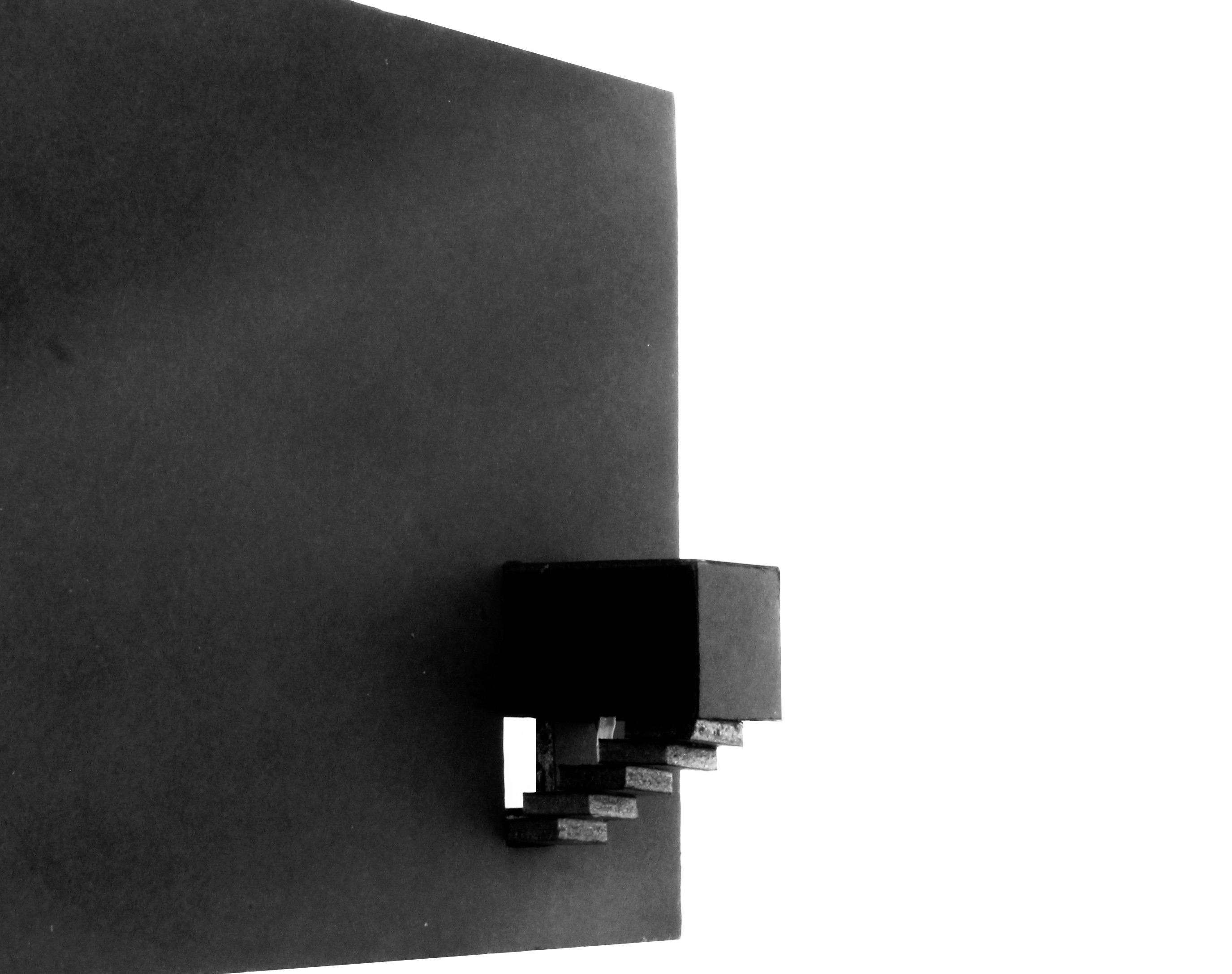
The aim of this project was to design an underground church that is a social space that forces solitary experience.
This architecture resembles the common Basilica plan in a sense that it has an elongated nave and a transept that crosses the nave. However, the cross in a plan is inverted in this church, not only in a plan but also in an elevation, making a three-dimensional inverted cross.
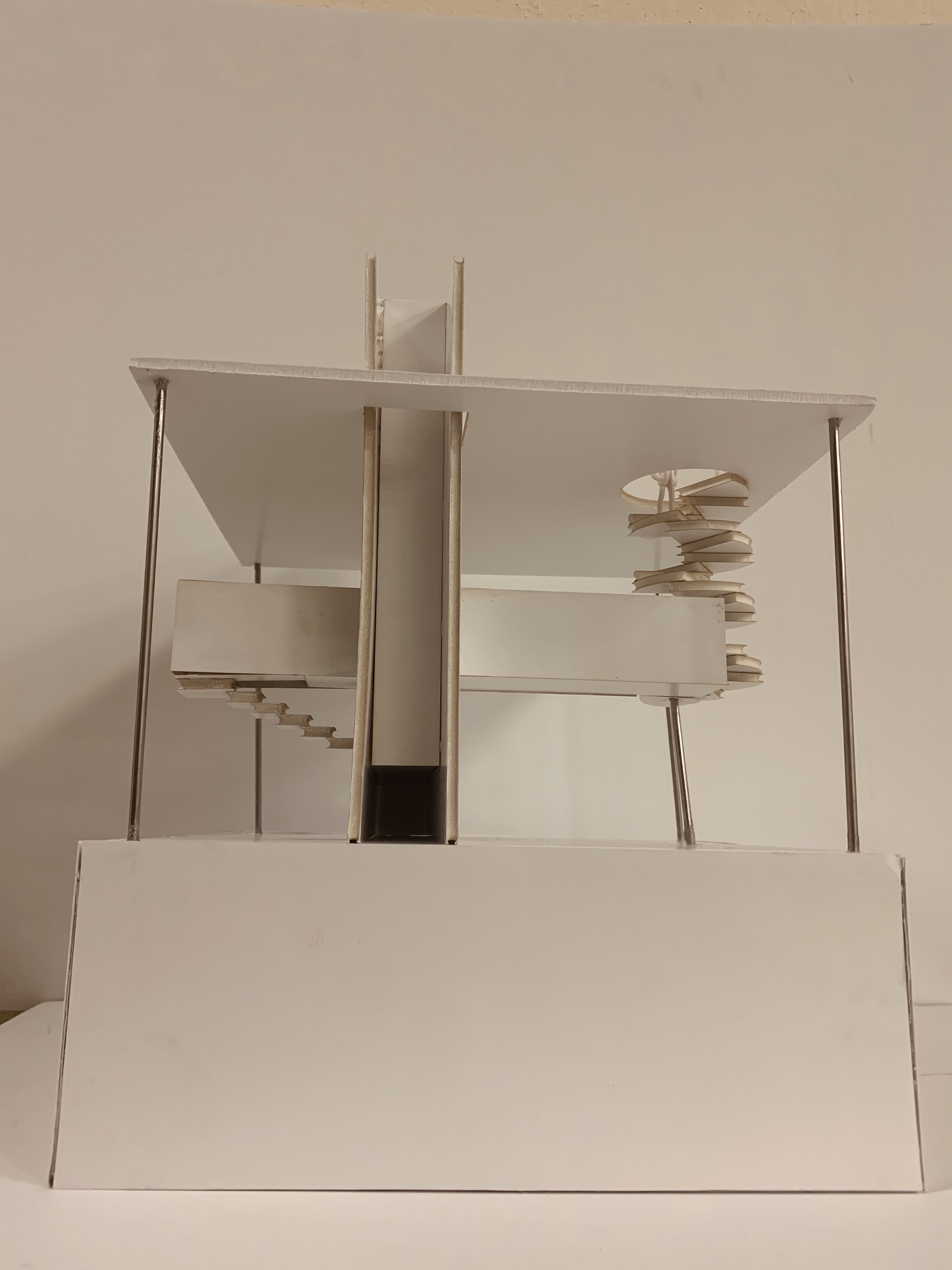
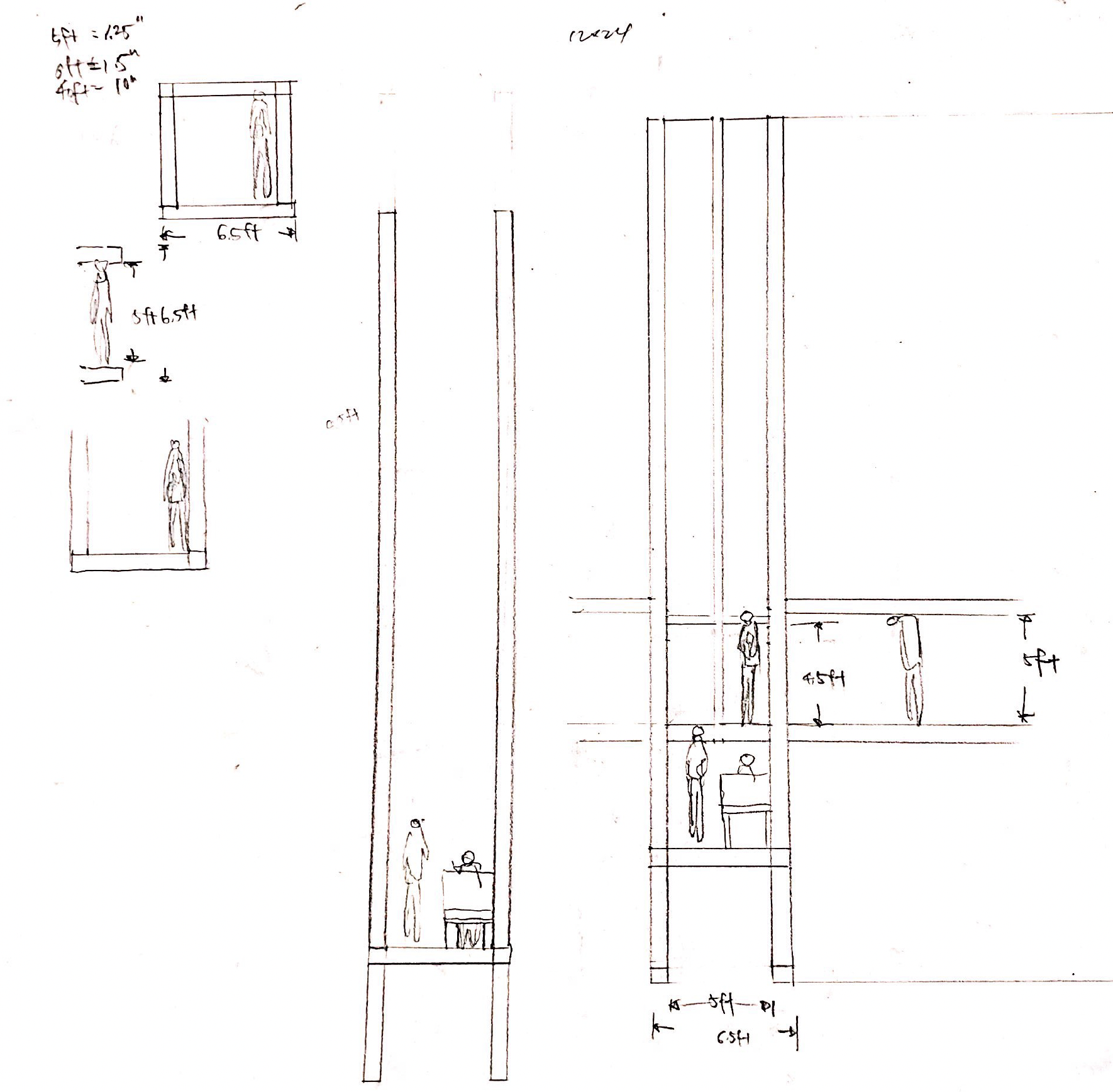
From the entrance to the transept and the nave, the width of each and every space is just enough for two people to get through, and the low ceiling height in the staircase and the transept forces people to lower their head. Even if this church is a social space, from start to finish, the journey of each individual is strictly solitary.
A study of the relationship between a human body and the structure
For instance, the narrow nave that is just enough for two people to stand in one line forces believers to sit alone and have an introspective experience in this space. Thus, this church is a social place where the believers gather, but their experience would be solitary and almost meditative.
In addition to the concept of subversion and suffocation, deconstructivism is another important element in this design of church. I attempt to deconstruct the dichotomy of light and darkness, god and Satan, good and bad.
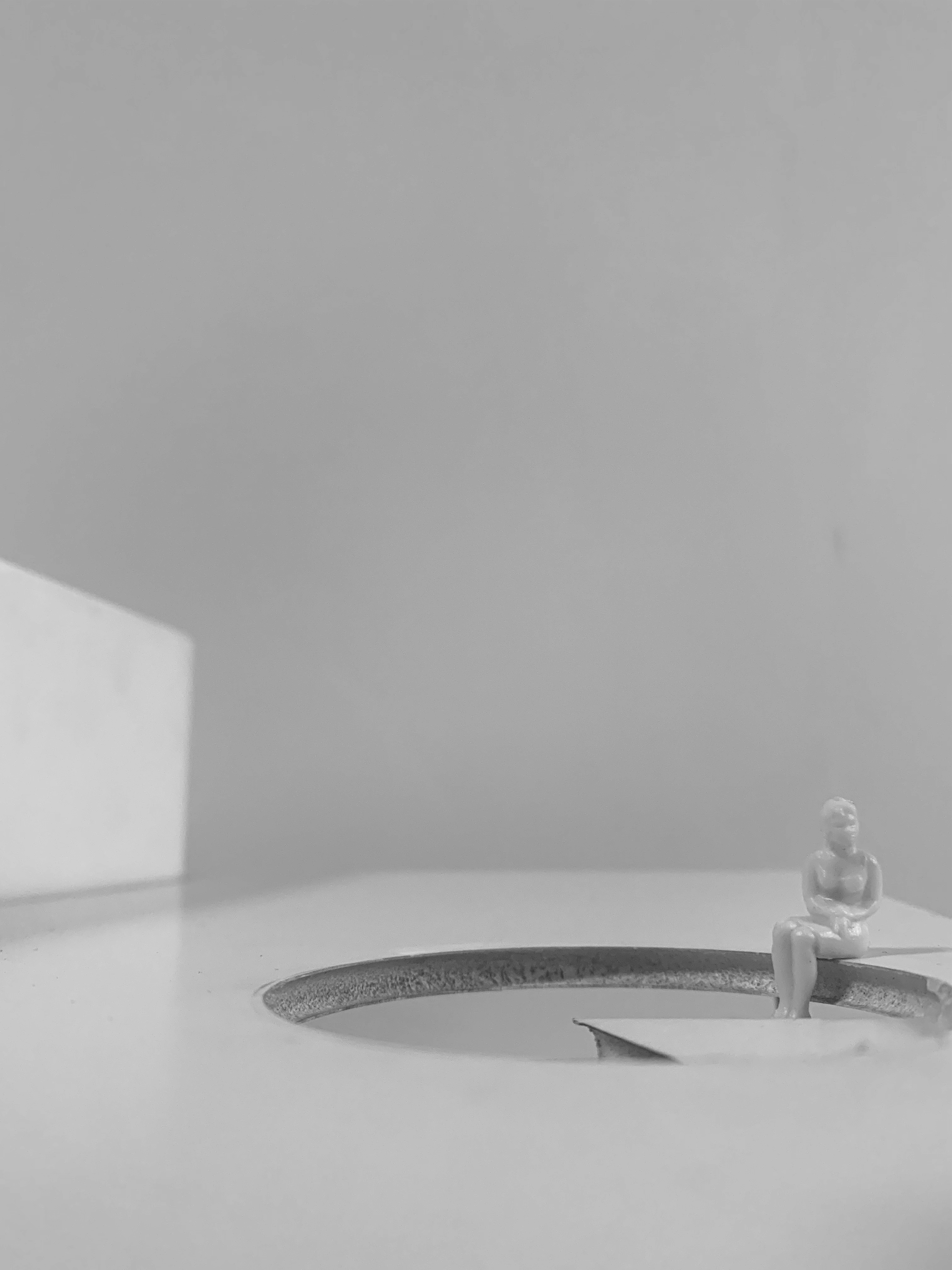
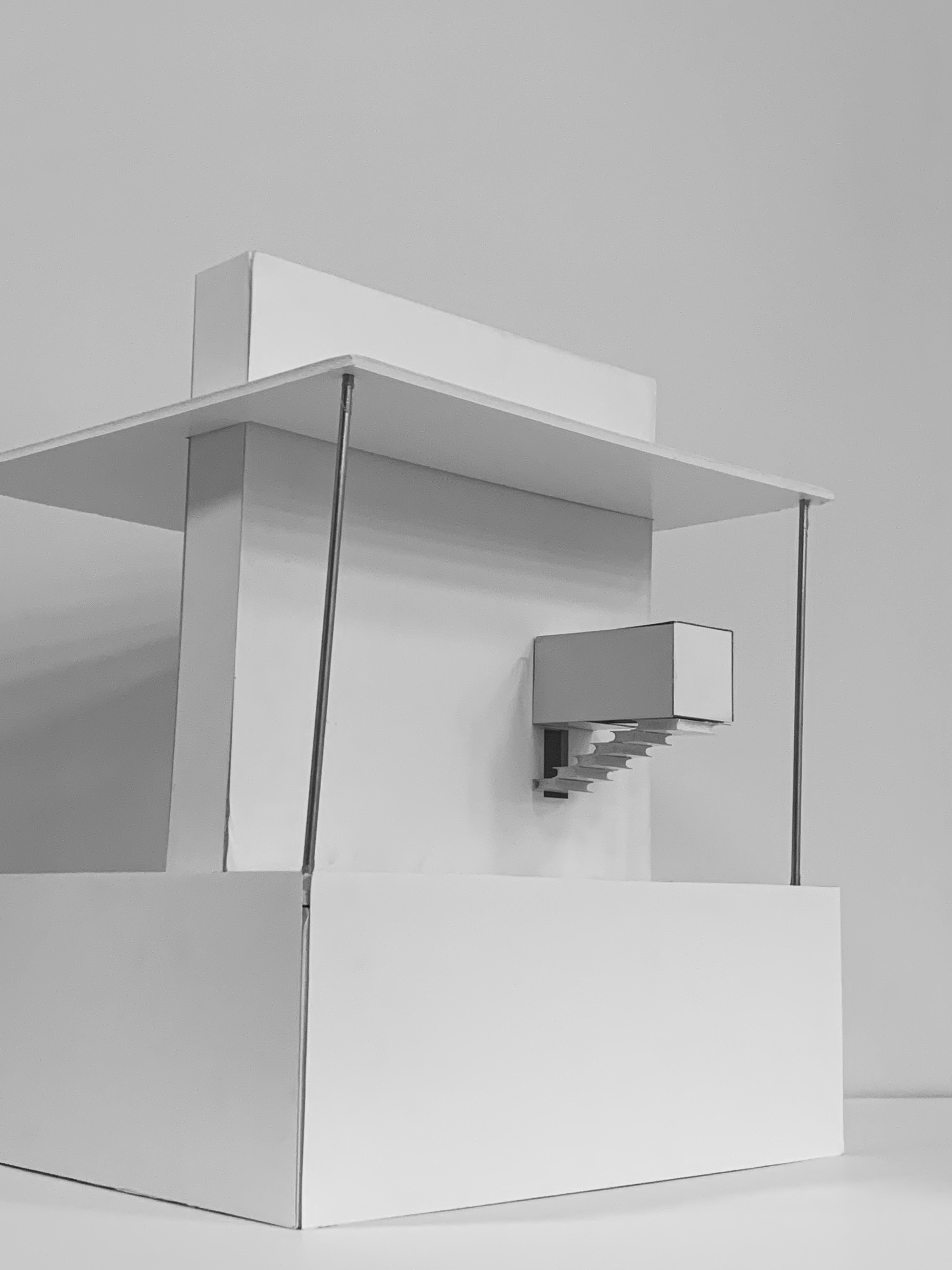
These concepts require the existence of the opposite; in other words, the very existence of one concept gives meaning to its opposite concept.
Though my architecture is mostly underground, the believers of this church require light from heaven to move or take an action.
And the walls of the nave are stretched until they bud out from the ground and almost caught in the middle of reaching heaven. Through these ambiguous elements that interrupt the clear distinction between terrain and sky, I am once again deconstructing and challenging the traditional authoritative dichotomy between light and darkness, god and Satan, and good and bad.
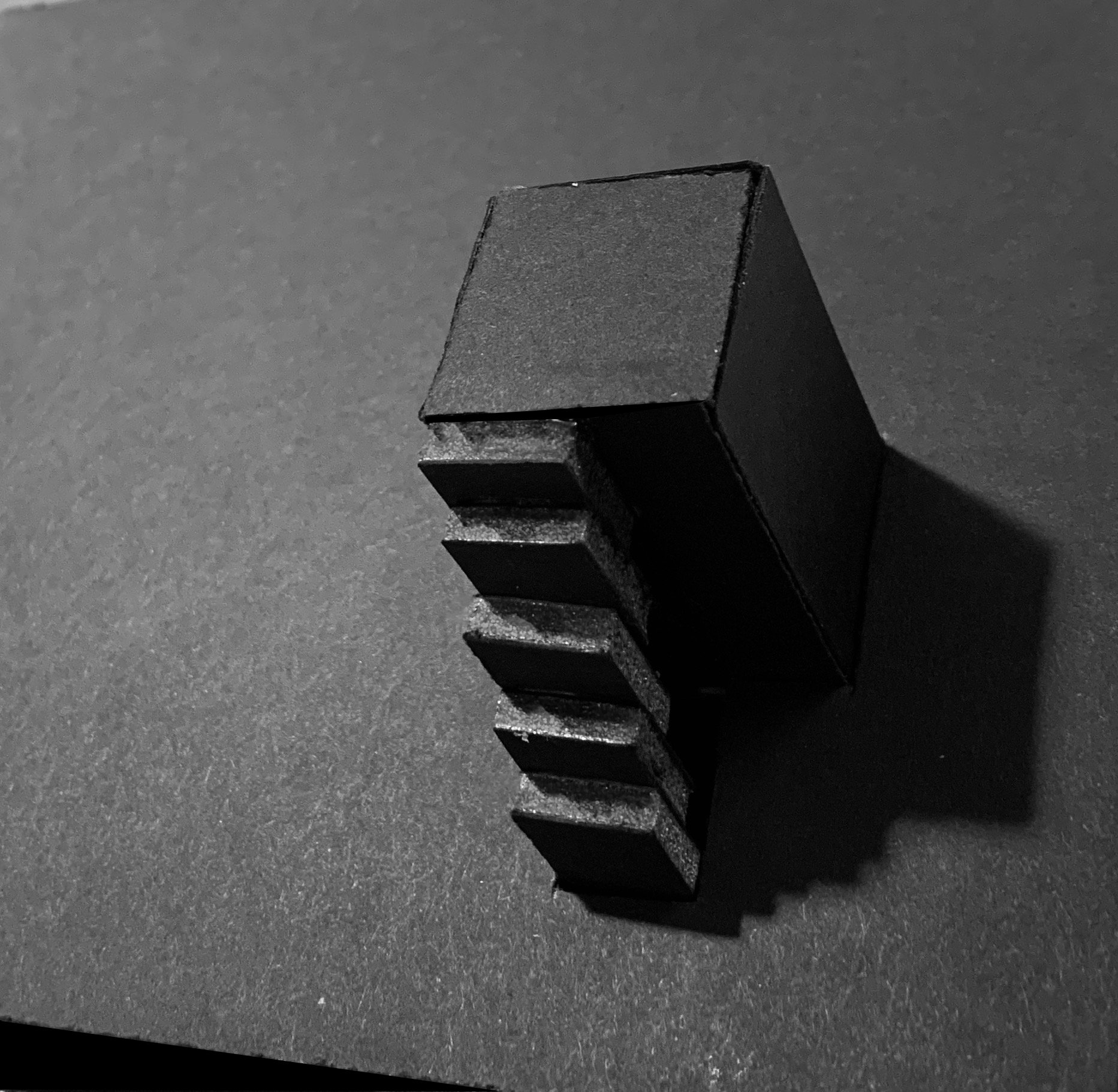
Lastly, note that two of the edges that define the nave space does not meet with other edges and rather meet with another plane. From the viewers on the outside, this form creates an illusion that this space is shrinking or slowly caving in. This not only serves as a tool to almost suffocate the viewers but also attempts to deconstruct the idea that two different edges should meet to create a space in a church design.

Sketches illustrating the twists and turns of the entry sequence